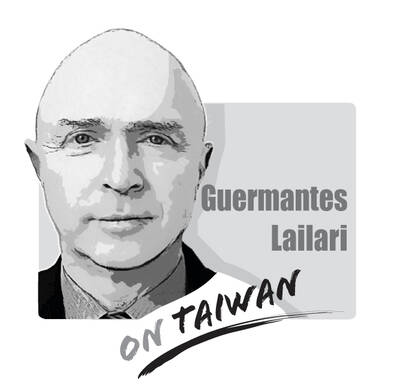It was widely reported that Taiwan retained the top ranking for the seventh consecutive year on Numbeo’s Health Care Index. Taiwan scored 86.5 on a scale of zero to 100 on the regular index and 159.2 on the exponential index, which places greater emphasis on positive responses to its surveys.
However, do the rankings reflect what truly happens in Taiwan’s medical system?
What I see on the front lines working at a medical center is a much starker reality. For many years, Taiwan’s medical industry has been rooted in the National Health Insurance (NHI) system, which provides high-quality services at low cost by exploiting healthcare workers, who work themselves into the ground.
While they are proud of the No. 1 rankings, the government and the media turn a blind eye to the predicament faced by healthcare workers. They even use it as an excuse to rationalize not increasing NHI premiums and refusing to improve the work environment, which could lead to the collapse of the healthcare industry.
The Numbeo rankings are based on how respondents feel about healthcare workers’ attitudes, convenience of access to medical services and cost. It is not a professional evaluation of the quality of medical services.
Taiwan’s high satisfaction rate comes on the back of medical professionals working overtime, and dealing with low incomes and fatigue. Healthcare workers are enslaved to fill a resource gap, sacrificing their mental and physical health while earning less than they should.
NHI premiums have not gone up for years. To survive, hospitals and clinics have to lower their costs and it is healthcare workers who face the consequences. Long working hours, high-risk work and low income are factors contributing to the trend of young physicians being unwilling to specialize in areas such as emergency medicine, surgery, obstetrics and gynecology to avoid high-pressure work environments. Even fields that are said to be relatively less stressful, such as ophthalmology and dermatology, are not appealing enough to retain talent.
The shortage of personnel worsens every day. Primary care providers are under pressure to deal with an increasing patient load, while the NHI system requires healthcare workers to do administrative work that is unrelated to medical care itself with no increase in resources.
The government should address and recognize the predicament and stop taking credit for rankings from opinion-based surveys. It must stop finding excuses to shrug off its responsibilities to implement healthcare reform.
Improving healthcare services should not require endless sacrifices by healthcare workers. For the sake of public health, problems in the industry should be addressed so that the Numbeo ranking is not merely superficial glory, but truly represents the well-being of healthcare workers and patients.
Lu Chun-wei is a dermatologist and Chang Gung Memorial Hospital assistant.
Translated by Fion Khan

There is much evidence that the Chinese Communist Party (CCP) is sending soldiers from the People’s Liberation Army (PLA) to support Russia’s invasion of Ukraine — and is learning lessons for a future war against Taiwan. Until now, the CCP has claimed that they have not sent PLA personnel to support Russian aggression. On 18 April, Ukrainian President Volodymyr Zelinskiy announced that the CCP is supplying war supplies such as gunpowder, artillery, and weapons subcomponents to Russia. When Zelinskiy announced on 9 April that the Ukrainian Army had captured two Chinese nationals fighting with Russians on the front line with details
Within Taiwan’s education system exists a long-standing and deep-rooted culture of falsification. In the past month, a large number of “ghost signatures” — signatures using the names of deceased people — appeared on recall petitions submitted by the Chinese Nationalist Party (KMT) against Democratic Progressive Party legislators Rosalia Wu (吳思瑤) and Wu Pei-yi (吳沛憶). An investigation revealed a high degree of overlap between the deceased signatories and the KMT’s membership roster. It also showed that documents had been forged. However, that culture of cheating and fabrication did not just appear out of thin air — it is linked to the
The Chinese Nationalist Party (KMT), joined by the Taiwan People’s Party (TPP), held a protest on Saturday on Ketagalan Boulevard in Taipei. They were essentially standing for the Chinese Communist Party (CCP), which is anxious about the mass recall campaign against KMT legislators. President William Lai (賴清德) said that if the opposition parties truly wanted to fight dictatorship, they should do so in Tiananmen Square — and at the very least, refrain from groveling to Chinese officials during their visits to China, alluding to meetings between KMT members and Chinese authorities. Now that China has been defined as a foreign hostile force,
On April 19, former president Chen Shui-bian (陳水扁) gave a public speech, his first in about 17 years. During the address at the Ketagalan Institute in Taipei, Chen’s words were vague and his tone was sour. He said that democracy should not be used as an echo chamber for a single politician, that people must be tolerant of other views, that the president should not act as a dictator and that the judiciary should not get involved in politics. He then went on to say that others with different opinions should not be criticized as “XX fellow travelers,” in reference to